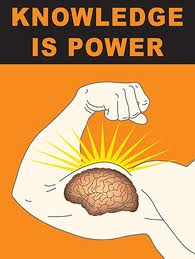As we have studied various types of
knowledge institutions during the semester, we have come across various
different patterns that transcended each of the different types of
knowledge. In our “salon” activity yesterday
and while studying the different blog posts in preparation for the activity, I
realized that one of the important trends in the knowledge systems was
exclusivity and complexity of knowledge.
From folk knowledge to written knowledge, exclusivity increased, but
then it came back full circle and is once again widespread with digital
media. After the move from folk and oral knowledge to written knowledge, the
increased exclusivity and problems that accompanied it were the cause for a drive to
increasingly widespread forms of knowledge systems.
Folk knowledge is the most basic of
all knowledge systems. It is so basic in
fact that we often don’t even realize we are learning these types of
skills. From birth we begin to pick up
on social norms and habits from our parents.
Although these types of knowledge might exclude people of other cultures
somewhat, folk knowledge is usually open to anyone who is willing to observe
and learn.
As Folk knowledge transitioned into
oral traditions, information became more exclusive. Bards and poets became the people in control
of information, but they still weren’t generally trying to keep information
from others. Oral traditions were meant
to be heard by others and anyone who could procure an audience with a
storyteller would have access to these stories.
Schools are also an example of a largely oral knowledge institution,
where knowledge is a little more exclusive to only those who are able to access
education.
The move from an oral to a written
knowledge system marked a huge jump in exclusivity. Suddenly, only a select few were able to read
and write. The scribes and the nobility
controlled all knowledge that was to be passed down. Cost of production for manuscripts in Europe
was so high that it literally cost a fortune to own just one codex, let alone a
library of them. Difficulty, cost, and
time of production all contributed to the scarcity of information. It was like ‘occupy Europe’: something like
5% of the people easily controlled 90% of the information. What resulted was an inversion of power that
caused oppression and lack of progress.
Writing, which had at one time been a proponent of progress, was now
causing this plateau in societal progress.
The dark ages truly were a time of great stagnancy, greatly because of
exclusivity of knowledge in the written system.
The drive for the diffusion of
knowledge may not have been a conscious one, but it was powerful and
necessary. Guttenberg’s invention of the
press gave a sudden liberation to almost every field of information. Medicine, religion, law, and education were
all suddenly able to break through the glass ceiling that was keeping them down. Society slowly became literate and
information became increasingly available to everyone. Some exclusivity remained because only those
able to find a publisher were able to spread their ideas, but by and large
information was free once again.
Through centuries, the augmented
globalization of commerce and cultures continued to drive man towards
accessibility of knowledge. With the
advent of the personal computer and the Internet, suddenly anyone could access
virtually any type of information. This
blog post for example is available to almost anyone in the world that can find
a working computer. Perhaps because of a
longing to recreate the ties that are formed by sharing folk knowledge, digital
media have even tried to imitate them by creating social networks. The pendulum has swung again and we are now
living in an age where almost all of anyone’s information can be accessed on
the Internet.
Our innate curiosity and drive for learning
caused a swing in the accessibility of knowledge from folk to written, and from
written back to digital and social media.
Obviously not all aspects of written knowledge were negative, but the
wide range of knowledge institutions available to us now create an atmosphere
conducive to the progress that we see today.



From Marketing and Business Intelligence to Social Media - US to develop smarter machines with visual designers: A friend of mine is a visual note-taker who anticipates that the future of digital media is moving towards Visual Branding, Communication and Expertise (Design). People with Visual Intelligence are artistic. They are aware of their surroundings and are good at remembering random facts that will be useful one day.
ReplyDelete